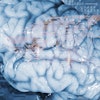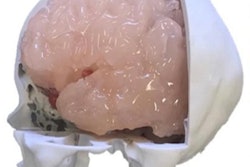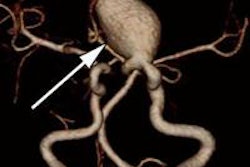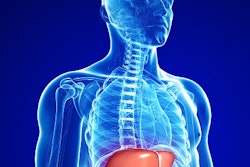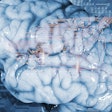
An artificial intelligence (AI) algorithm is able to classify the rupture status of cerebral aneurysms with a promising level of accuracy, even outperforming experienced neurosurgeons, according to research published January 15 in Radiology: Artificial Intelligence.
A team of researchers from Japan developed and trained a set of machine-learning algorithms to classify rupture status based on the analysis of morphologic variables and hemodynamic parameters. In testing, the highest-performing model had an accuracy of 78.3% and bested neurosurgeons.
"The model worked with relatively high accuracy, in which projection ratio, irregular shape, and size ratio were important for the discrimination of ruptured aneurysms," wrote the authors, led by Dr. Satoru Tanioka, PhD, of Mie Chuo Medical Center in Mie, Japan.
To develop a classification model for rupture status and evaluate the importance of each morphologic variable or hemodynamic parameter on rupture status, the researchers retrospectively evaluated 226 cerebral aneurysms from 188 consecutive patients at their institution between 2011 and 2019. Of the 226, 112 were ruptured. All aneurysms included in the study were saccular aneurysms and had been diagnosed with 3D CT angiography and analyzed with computational fluid dynamics.
Next, the researchers used a random-forest machine-learning algorithm to train three classification models. The first model was based only on morphological parameters, while the second was based only on hemodynamic parameters. The third model assessed both morphological variables and hemodynamic parameters.
In addition, two vascular neurosurgeons with approximately 30 years of experience independently evaluated -- while blinded to the patients' clinical history -- the patient age and sex, location of aneurysms, and stereolithography and then classified aneurysms as either ruptured or unruptured. The researchers then compared the neurosurgeons' assessments with that of the machine-learning models.
The third model based on both morphological variables and hemodynamic parameters performed the best.
| Performance of vascular neurosurgeons vs. machine-learning models for classifying rupture status of cerebral aneurysms | |||||
| Vascular neurosurgeon 1 | Vascular neurosurgeon 2 | Model 1 (morphological variables) | Model 2 (hemodynamic parameters) | Model 3 (both variables and parameters) | |
| Accuracy | 72.6% | 73.5% | 77% | 71.2% | 78.3% |
The researchers noted that aneurysm cases are sometimes encountered in clinical practice in which it's difficult -- but important -- to ascertain the rupture status to determine the treatment strategy.
"If our [machine-learning] classification models are applied to such aneurysms, then the models can identify a ruptured aneurysm more accurately than experienced vascular neurosurgeons, which may reduce unnecessary treatment and its additional risk," the authors wrote.
Furthermore, a patient can sometimes be admitted with a head injury and both a subarachnoid hemorrhage and an aneurysm adjacent to the cisternal clots. It can be difficult to decide if the hemorrhage resulted from the head injury or a ruptured aneurysm, according to the researchers.
"As with the above case, if the [machine-learning] models could identify the rupture status correctly, then we can avoid an unnecessary risky surgery of an unruptured aneurysm in an acute post-traumatic phase," they wrote. "However, in this case, more accurate models need to be developed because the clinical decision is whether a patient should undergo the surgery."

